|
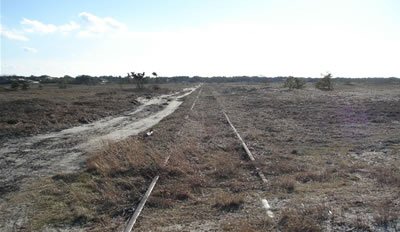 Abandoned Smith Meal Fish Company siding - View NE |
|
|
PROMISED LAND: PLATFORM ONLY. OPENED: _? AS FLAG STOP ONLY, FOR EMPLOYEES OF NEIGHBORING FISH PROCESSING PLANTS. APPEARS AS A SIGNAL STOP AS "PROMISE LAND" IN SPECIAL INSTRUCTIONS OF ETT #15: 06/29/1900. APPEARS AS SIGNAL STOP IN SPECIAL INSTRUCTIONS OF ETT #27: 06/25/1903. APPEARS AS A SIGNAL STOP IN SPECIAL INSTRUCTIONS OF ETT #49: 09/09/1908. APPEARS AS STATION DESIGNATION "S106" IN 1903, 1913, AND 1924 CR4 BOOKS (Art Huneke data). CINDER PLATFORM IN 1924. STATION STOP DISCONTINUED: 12/31/28 (Robert Emery data: both items). Research: Dave Keller |
||
|
|
||
 MP106 Promised Land siding 6/17/1967 Photo/Archive: Richard F. Makse
|
Previously, a sidetrack came off the Montauk Branch at MP 105.63 (see 1958 Emery map below left), serving the Gardiner's Bay Company and American Fisheries. MP105.63 was the site of the Promised Land station where bonackers(1) from East Hampton and Amagansett detrained for their jobs at the fish plants (they also used Napeague Beach station to reach another plant). The late Jimmy Osborne, agent at Southampton, gave me this ticket to the Promised Land when I accompanied him on reefer siding check in Watermill, Bridgehampton and Wainscott in 1963.
First Class Passage ticket Amagansett to Promised Land - 12/25/1907 If you never ventured out east of Amagansett when Promised Land was active, you could never forget the smell. During the 60's, 70's and 80's, when The Hamptons became one of the playgrounds of Hollywood, TV and Broadway, glitterati like Billie Joel and Christie Brinkley could certainly not abide with the ever-present smokestack effluents from Promised Land. While a number of fish factories were still active into the 1960's, they gradually disappeared with the only significant plant remaining on the East Coast at Reedville, Virginia, a pleasant little town. The museum at Reedville has on display a fish meal bag from a Smith processing plant near Tuckerton NJ that survived only a short time after Promised Land's demise. If you are interested in reading
more about this faded industry on Long Island, I recommend "Munnawhatteaug
The Last Days of the Menhaden Industry on Eastern Long Island", published
by the Southold Historical Society. A well-illustrated pictorial history.
Richard F. Makse
|
|
|
|
||
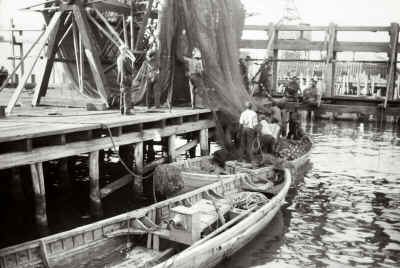 Promised Land - Crew Pulling Seine Reel c.1930s (Montauk Library-Carlton Kelsey Collection) |
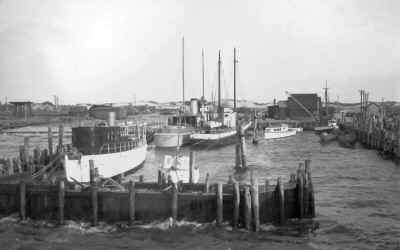 Promised Land - Edwards Brothers dock 1938 Archive: Montauk Library-Carlton Kelsey Collection |
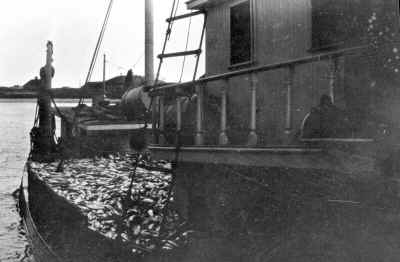 Promised Land - Fish catch to be dockside unloaded c.1930 (Montauk Library-Carlton Kelsey Collection) |
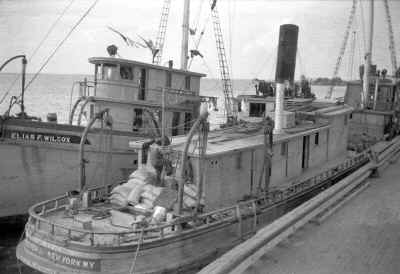 Promised Land ships: Elias F. Wilcox, Edward J. McKeever view NE (Montauk Library-Carlton Kelsey Collection) |
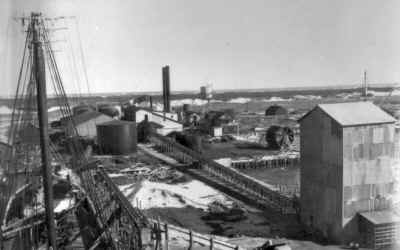 Promised Land - Triton 1930 Photo: Earl Gardell Archive: Montauk Library-Carlton Kelsey Collection |
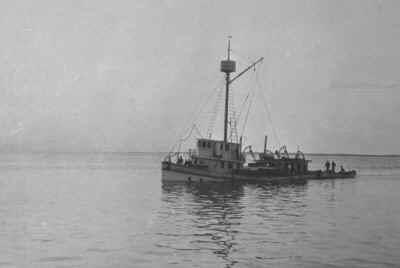 Bunker Steamer ship: Elizabeth Edwards c.1930's (Montauk Library-Carlton Kelsey Collection) |
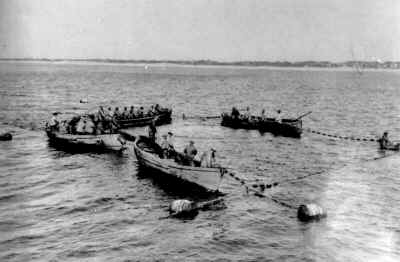 Promised Land Bunker Fishing - Double Crew c.1930's (Montauk Library-Carlton Kelsey Collection) |
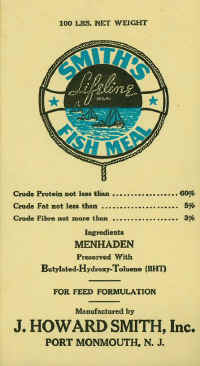 Smith's Menhaden Fish Meal - Archive: Montauk Library |
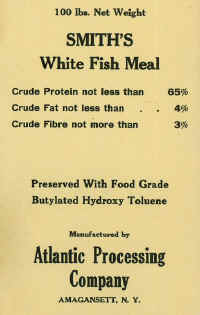 Smith's White Fish Fish Meal - Archive: Montauk Library
|
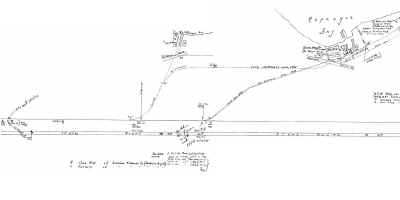 Emery map - Promised Land MP105-107 8/1958 Archive: Dave Keller |
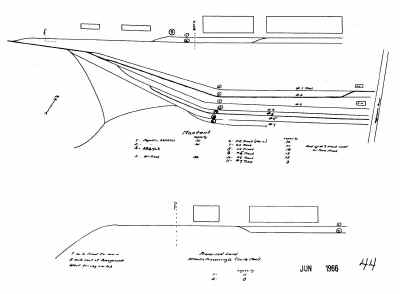 LIRR map 1966 page 44 - Promised Land |
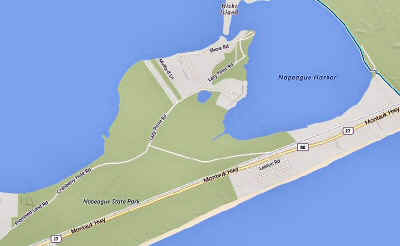 Promised Land - Napeague State Park map 2017 |
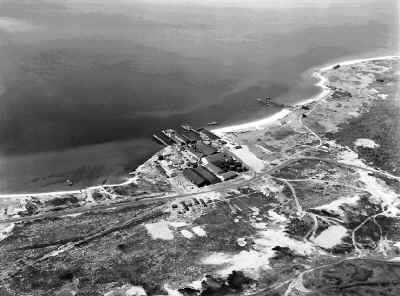 Aerial view of Smith Meal Plant c.1960s Photo/Archive: Dave Edwardes Courtesy: Montauk Library |
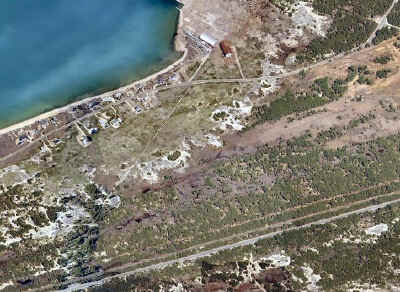 Promised Land Aerial 2017 Note the ex-LIRR razed siding "scar" leading from the current LIRR to the ex-plant location. |
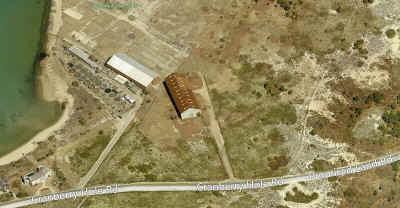 Promised Land zoom aerial - Ex-Smith Meal Plant 2017 |
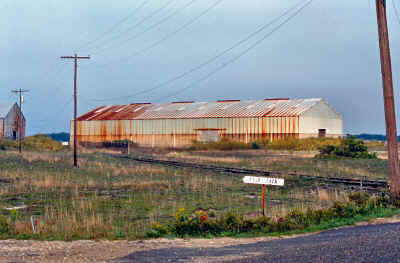 Promised Land "Fish Farm" 9/2//1987 Photo: Edward Hand |
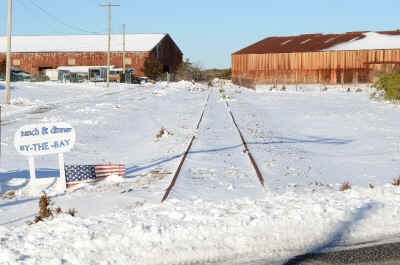 Promised Land 2/10/2013 Photo: Edward Hand |
|
|
FISH OIL PRODUCTION - PROMISED LAND |
||
|
By the 1850’s the whale population was diminishing, due to over killing of the whales, and caused a demand for an alternative fuel. The discovery of Menhaden (Fish Bunker) as a replacement of whale oil sparked a boom in the Menhaden fishing and processing on Long Island, as well on the East Coast from Maine to North Carolina. There were more than 25 factories around Peconic Bay alone. In 1881 the estimate of menhaden fish caught was 400,000 with a value of $975,000. Over a period of time with a large number of complaints about the fish smell New York State passed a Health Law that forced the closing of these plants and relocated some plants to different areas. One area of Long Island in 1873 that was unfit for farming due to sandy soil was Napeaque (Promised Land) between Montauk and Amagansett which was uninhabited and also had deep water (Napeaque Bay - see map above left) so that a port could be built. Bunker oil was promoted as coal miner’s lamp fuel, a lubricant for machinery, an additive to paint, cosmetics, linoleum, margarine, soap, and insecticides, and what was left over after the oil was cooked out of the fish could be used for animal feed. By 1881 there were more than 350 ships supplying menhaden to 97 fish factories in the East End that employed more than 2,800 people. In 1898 a British and American consortium decided to invest in the bunker fishing trade. They formed a company named American Fisheries Company and bought most of the fish factories from Maine to the East End of Long Island, creating a monopoly in the industry. At Promised Land they bought all 7 fish factories that were there. The LIRR built a large freight yard and a freight station in Promised Land for the American Fisheries Company. A fire the next year destroyed the freight station along with some freight cars. Due to overfishing of bunkers, the American Fisheries Company reorganized in 1900. Another fire at one of the Promised Land factories in 1907 caused the American Fisheries Company to go bankrupt. The plant closed down in 1926. The Hayes and Anderson Fishers Product plant was destroyed by fire in 1930 leaving only one remaining factory in Promised Land- the Triton Oil and Fertilizer Company which was purchased by Gilbert P. Smith. He owned a number of processing plants along the East Coast. Mr. Smith upgraded and modernized the fish meal factory. He owned a fleet of 17 fishing boats that was based in Greenport to fish for the Bunkers along the East Coast from Massachusetts to North Carolina. After World War Two he also used four Piper Cub aircraft that flew out of the Hamptons to aid in searching for Bunkers and radio to the ship the location of the schools that were seen. The boats would be out for a week trapping fish in their nets during the fishing season between April and October when the fish meal factory was opened. During this time millions of bunker’s were unloaded at the Promised Land Factory dock and then boiled in huge vats and crushed by huge rollers. The fish oil was then piped into large storage tanks and later shipped out by rail road tank cars. The fish meal, which was left over pulp and bone, was a high protein supplement for animal feed. It would be blown into boxcar roof hatches and also shipped by the LIRR westward to Holban Yard and beyond. The LIRR also shipped bulk fuel to the fish factory. The Smith Fish Meal factory closed in 1968 and that ended the Long Island Bunker Fishing Industry. Research: Michael Bartley The Growth and Decline of the Long Island Rail Road Freight Traffic In Suffolk County |
||
|
SMELLS LIKE MONEY |
||
|
Sheds, foundations, dock pilings, and railroad tracks are all that remain of Promised Land, once the center of America’s immensely profitable Atlantic menhaden fishing industry. Beginning in the
1870's, fishing vessels embarked from Promised Land and points around Long Island to catch millions of menhaden and bring them to the fish factories here, where they were rendered into oil and fertilizer. It is unclear how Promised Land was named, but most agree that foul odors produced by the fish factories made them highly undesirable neighbors. This desolate area of beach represented a remote “promised land” where the industry could operate without fear of lawsuits. The name has also been attributed to African American menhaden fishermen from Virginia and North Carolina because there were so many fish in that “promised land up north.” A post office carried the name Promised Land between 1879 and c. 1900. Courtesy: Montauk Library 4/17/2015 |
||
| CATCHING MILLIONS OF MENHADEN | ||
|
By the mid-1800s, continual capture of Atlantic menhaden forced shore fishermen into sloops and schooners to pursue the elusive fish into increasingly deeper and more distant waters. Crews used purse nets to surround, trap, and haul in large schools of the fish. In later years, old ships were sometimes remodeled into floating factories that could follow the fishermen. Steam-powered
fishing boats, first developed for menhaden fishermen in The
fishing crews of Menhaden
fishing boats usually included a captain, first mate, engineer, and crew, many
of whom were African American seasonal workers from It was dangerous work as Menhaden fishing was heavy, dirty, dangerous work. As purse nets closed, fish sometimes died too early from oxygen starvation. Their dead weight would drag the net down, capsizing the purse boat before the crew could get the fish in. Fishing vessels ran aground in the dark or fog. Fires broke out. Crews were lost at sea during storms. As the 20th century progressed, fluctuations in menhaden stock, opposition from sport fishermen, and rapidly increasing numbers of wealthy residents and vacationers caused Promised Land’s last fish factory, the Smith Meal Company, to close in 1969. The Smith family, which operated ten factories along the Atlantic Coast along with single locations in Canada, Peru, and Chile, transferred some of their properties to the state to create Napeague State Park.
Courtesy: Montauk Library 4/17/2015 |
||
| A special thanks to Montauk Library Research Historian, Maura Feeney, for all her assistance in providing the above scarce material. | ||
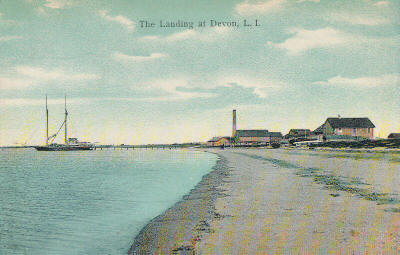
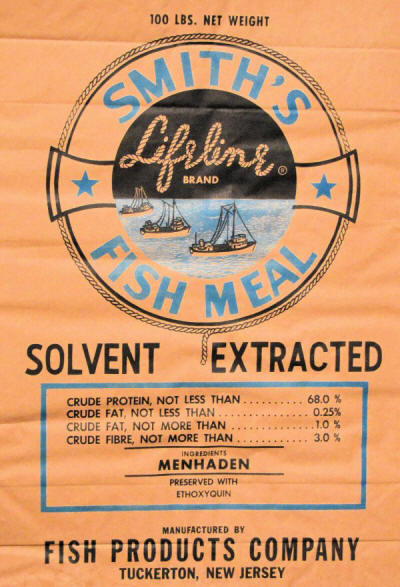
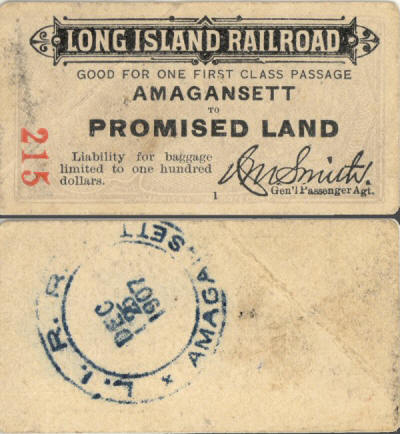
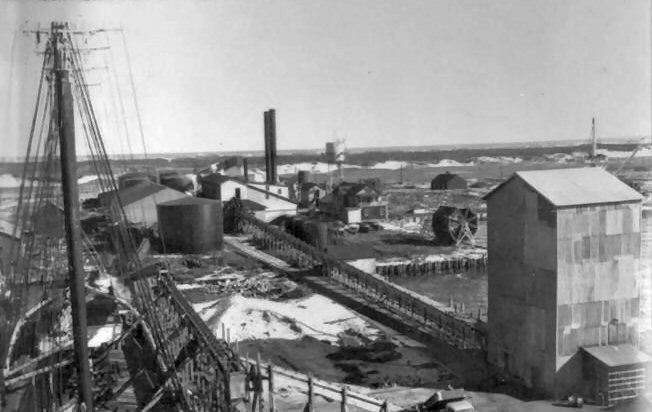 Promised Land factories included Novelty Oil Works, E. Tuthill & Co., Excelsior Oil Works, Montauk Oil Company, Falcon Oil Works, Dixon Oil and Guano Company, Ranger Oil Company and, later, Triton Oil & Fertilizer Works (pictured here in c. 1911), Atlantic Oil & Fertilizer Company, Fisheries Products Company, and the Smith Meal Company. Total production was valued at over $1 million and represented over half of the industry’s total value.
Promised Land factories included Novelty Oil Works, E. Tuthill & Co., Excelsior Oil Works, Montauk Oil Company, Falcon Oil Works, Dixon Oil and Guano Company, Ranger Oil Company and, later, Triton Oil & Fertilizer Works (pictured here in c. 1911), Atlantic Oil & Fertilizer Company, Fisheries Products Company, and the Smith Meal Company. Total production was valued at over $1 million and represented over half of the industry’s total value.